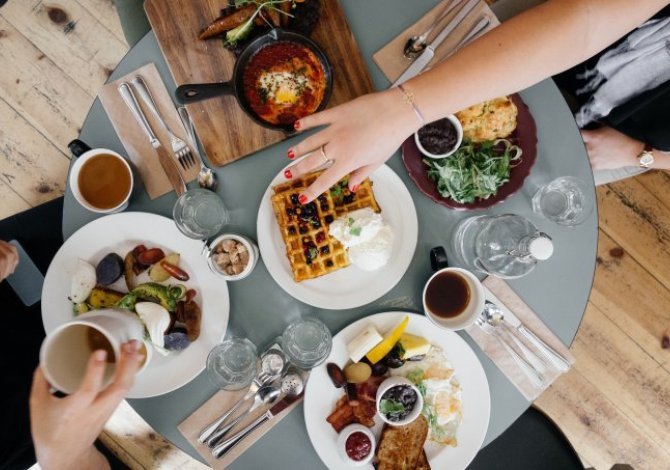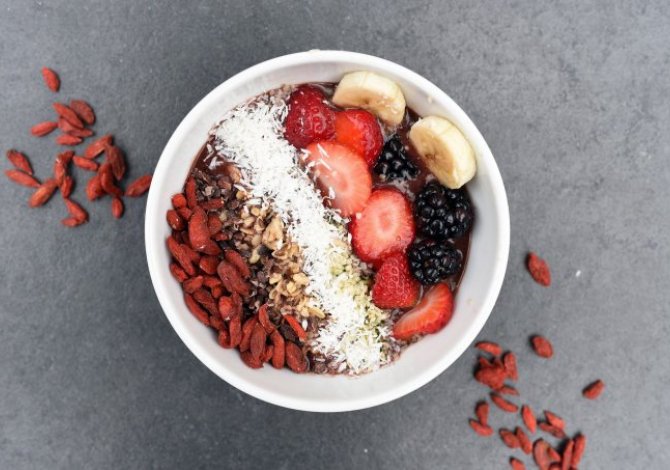A few months ago, I talked about the shift in sweet baked goods to savory ones - those usually reserved for main courses - to create a new class of cakes and desserts. You may remember seeing them at your favorite local bakery: things like black pepper, smoked paprika cookies, and togarashi cheesecake. These were fresh treats for the modern sweet tooth, and I hoped that with the right recipes and a little encouragement, they would illustrate exactly the kind of alignment that an avid home baker could handle. Professionals who left home could still partake in tastes from around the world by picking up a sweet and savory kouign amann or a piece of spiced pound cake from a nearby store.
Now, of course, things have changed. Most likely, your favorite local bakery has had to temporarily close its doors. To fill that void (and all the hours spent inside), we've all become avid home bakers; a few weeks later, we're ready to stretch a little further than banana bread. Looking to chefs and master bakers for inspiration is more valuable than ever, and following their lead by incorporating spices into our sweet baking projects checks all the right boxes: it's a way to play with flavors that doesn't require a dedicated shipping trip. That time you grabbed garam masala from your pantry when you wanted cinnamon, catching yourself just before you put a spoonful in your snickerdoodle? Turns out you might have been on to something really good.
Ingredients from outside the pie station are tipping the scales for many new recipes back in the flavor direction.
According to Melissa Weller, head baker at New York's High Street Bakery on Hudson, the current pastry moment is marked by a fairly fundamental shift in taste: people aren't as enamored with sweetness as they used to be. After years ruled by softball cupcakes under a pile of stiff buttercream, American sugar preferences have flipped the other way. Now, in reference to fancy restaurant desserts and homemade birthday cakes, we use "not too sweet" as the benchmark for a great bite. This is well illustrated by the rise of fleur de sel, such as Ubiquitous Dessert Topper: "Ten years ago, it was very rare for anyone to sprinkle fleur de sel on their cake," Weller says. "Now everyone sprinkles it on their pies because we're looking for balance." To that end, ingredients outside the pie station have begun to play a larger role in baking sweets, tipping the scales for many new recipes back toward pie.
The push for a more balanced dessert has led many chefs to the spice cabinet, but Briana Holt, executive chef at Tandem Coffee + Bakery in Portland, Maine, says "it's not a conscious thing. I often come at a recipe backwards, trying to achieve a certain mood or feeling, rather than deciding that I need to use a particular spice first." For Holt, adding conventionally savory ingredients to her sweet baking arsenal gives her a lot more room to play and many more opportunities to land on something new. Her process sounds a bit like pairing ingredients, combining flavors that bring out the best in each other. "What can make chocolate more chocolatey? What can make a dark and moody plum something more to balance the flavors and bring out the best in each other?" The answer might be a spice from the same shelf as a baker, but with a completely different skill set: Chinese five spice, for example, instead of the classic pumpkin pie combo. Holt calls it "an exciting lateral move, another room in the same house."
Agatha Kulaga, co-founder of Ovenly in New York City, believes that in addition to opening up space for creative chefs, the move to savory sweet baking also has practical implications. As opposed to a lofty slice of super-sweet pie, she says: "Ovenly's baked goods are meant to be an everyday indulgence, a treat that can actually be finished." When a brownie has more to offer than just chocolate richness, like a hint of smoky ancho chile powder, it's compelling enough to keep you eating until you get to the last crumb. Zachary Golper, chef and owner of Brooklyn's Bien Cuit, agrees: To bring sweet baked goods into the "afternoon snack" category, he likes to pair sour fruits with peppery or spicy flavors, making the end product savory enough to keep the eater coming back. "People can only handle so much spice in a pound cake, for example," she says. "But they want that added flavor. That's different."
Of course, using spices in sweet applications is as much about technique as it is about ingredient selection. Chefs play with how and when they add a particular spice to apply just the right amount, in a way that adds interest but doesn't overwhelm. Weller is a fan of grinding spices with sugar to create a vibrant blend, which she sprinkles between layers of her laminated kouign amanna. Fruity and floral spices work well with the richness of the butter and sweetness of the cake, so she's keen on flavors like saffron and pink peppercorn. Sasha Piligian, formerly of Nashville's Lou and LA's Sqirl, takes a similar approach, pairing cilantro (as well as Meyer lemon) with sugar for her palm petals.
Others go the infusion route, steeping whole spices in simple syrup, melted butter or warm oil to infuse the liquid with savory flavor. At Tandem, Holt soaks a still-warm dark chocolate cake in homemade juniper syrup, adding a "cool-in-temperature, woodsy vibe" that permeates every bite. You can soak up any spice with sugar and water, then use it to soak up the loaf batter or brush it over several layers of cake," - she advises. "It's a good way to moisten the dough in general, so the flavor is an added bonus." Golper opts for saturated fats in Bien Cuit, replacing all or part of the regular butter or oil the recipe calls for with a spicy, seasoned version. Because flavored fats can pack a wallop, he says, "dosage control is very important."
If incorporating spiciness into your next sweet baking project sounds like an exciting challenge, rest assured: anyone willing to stretch the idea of what counts as a dessert ingredient can tackle this trend at home. Piligian recommends playing with a simple, familiar recipe that adapts well to different flavors, such as shortbread cookies. "Start with something you know you love and try adding one flavor element, like a mix of spiced sugar," she suggests. "Start with something small and work your way up to the flavor you want; you can always add more, but you can't take away the spice!" Palmiers are a similarly versatile canvas for experimentation: spicing up a sprinkle of sugar with your favorite spice results in an aromatic flavor note in each swirling layer. For every half cup of sugar, try mixing in a tablespoon; the exact amount can vary depending on the spice you use, so try a pinch and adjust until you get the right balance.
"We're not set in our ways and we're always evolving."
To really get a taste of the effects of spices, consider breaking out the ice cream machine; the high fat content and inherent richness of ice cream makes it a ready-made playground for spicy foodies, so if you've been waiting for the right reason to dust off the machine, this is it. Tyler Malek of Salt & Straw, perhaps the king of ice cream flavor experimentation, agrees. "Ice cream carries flavors in a way that no other food can," he says, "making it an interesting way to test combinations." He suggests pairing spicy or hot ingredients with fruitier ice creams (as in his strawberry, black pepper, and balsamic mash-up), while herbal flavors work better with chocolate or cream. Just don't get discouraged if your first batch doesn't turn out as planned: "Spices can be intense and change as they freeze. We've had a thousand mistakes in research and development and a thousand cases of 'happy accidents.
As with any other form of baking, using spices in baked goods and desserts isn't an instant hit with everyone; chefs are used to giving customers a bit of a nudge, and you may have to do the same with your quarantine colleagues if you try this trend at home. When the pie at Tandem is stocked with Chinese five spice apple scones and black pepper pear, Holt says: "We have to answer a lot of questions. People who like the food get it and want to try it, but there are a lot of people who say, 'Is it spicy? Will it be good? Will I like it?' It's a learning curve." At Lou's, Piligian found that when people came for dessert, "they were expecting a white cake with sweet icing - a traditional cake with traditional flavors." But, he adds, "Change is coming! When people respond to new combinations, it's really exciting. They just didn't know it was possible." Holt agrees: "I love it when I get to try something I never had or expected to, so helping other people have that experience is amazing."
It may seem like a small thing, this change in how to think about dessert, but Weller believes that embracing variety and unusual flavor combinations is a uniquely American development. "In this country," he says, "baking is a little more creative. We're not set in our ways and we're always evolving." Maybe that means we'll be back to toothache-inducing cookie tips a decade from now, clamoring for super-sweet frozen cakes and cookies. But in the meantime, while we're cooking for ourselves at home, the candy wave feels like the perfect ride: a simple way to beat the boredom of baking, add a twist to an old standby recipe, or branch out in a whole new direction. As Holt says, it's a worthwhile experiment that can be undertaken today: "Most people already have everything they need to try something different - in their spice cabinets."
















Comments (0)